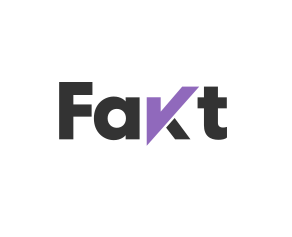Written by Kosisochukwu Charity Ani
“Transfer this message to 15 people, otherwise it will happen to you woe. Someone in Zambia refused to transmit this message and lost their job this week. A woman in South Africa has forgotten her, she is now a widow ”. Any user of WhatsApp has certainly already encountered this kind of threat or blackmail: transfer a suspicious message to a specific number of people or risk a mysterious punishment.
WhatsApp, the private messaging platform belonging to Meta, which has more than 3 billion monthly active users around the world, has long been fighting against a real disinformation pandemic, covering subjects ranging from health to politics or history. Although other social platforms also experience disinformation problems, WhatsApp is distinguished by its personal aspect. On Facebook, an unknown person can say that the bitter leaf heals diabetes, and most users will ignore this publication. But imagine your elderly mother, suffering from diabetes, receiving this same message from a friend or a parent who has confidence. She could follow this dangerous advice and expose himself to serious risks to her health. While other social platforms have community facts and tools to combat disinformation, private nature and end -to -end encryption unfortunately facilitate the spread of false information.
At the World Summit on Fact-Checking in Rome, WhatsApp openly recognized this problem and announced its desire to fight it by collaborating with factors, experts and other stakeholders. The platform has even financed research up to a million dollars, stressing that "the objective of these research scholarships is to facilitate high -quality external studies, carried out by academics and experts located in countries where WhatsApp is frequently used, but where research on this subject remains limited. We believe that it is essential to obtain impartial analyzes taking into account social and cultural variations in the use of our product, ”said the press release.
On April 28, 2025, Aravind Srinivas, CEO of Perplexity AI, announced on his official account X his collaboration with WhatsApp: “You can now use Perplexity directly from WhatsApp. Answers, sources, generation of images. Many other features come soon! +1 (833) 436–3285, " he said .
This integration of AI to WhatsApp is not the first, because users could already interact directly with Chatgpt and Meta AI. But integration with Perplexity is distinguished by offering real support for Fact-Checking. Although this integration does not automatically solve the problem of disinformation, especially due to the encryption of the platform, it allows users to quickly check the veracity of messages and images relayed in family or friends groups. Perplexity offers an instant Fact-Checking accompanied by reliable sources to support its conclusions.
Some find complex or technical fact-checking, but thanks to the simplicity of Perplexity, any user, regardless of their technical level, can check the information easily. Just send the questionable WhatsApp message to the Perplexity number, +1 (833) 436–3285, to quickly obtain an answer on the veracity of the transmitted content. Do not hesitate to share screenshots, messages, images or quotes assigned to public figures and any other suspicious information requiring verification.
The Fact-Checking has never been easier: simply add the Perplexity number (+1 (833) 436–3285) to your contacts, then transfer the questionable WhatsApp message exactly as you would for those around you. Perplexity will analyze and provide you with all the necessary details on this message or this image. Currently available in more than 20 languages, this feature should expand in the future to go beyond the simple individual transfer. Perplexity could even appear in your WhatsApp group discussions, like Meta AI, and automatically intervene when disseminating suspicious messages. Although this possibility raises concerns in privacy, many believe that it could considerably reduce disinformation on WhatsApp. Do not forget to share this article with 15 people to allow them to easily check the information received.





